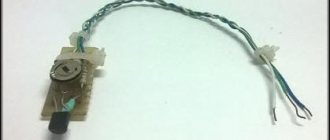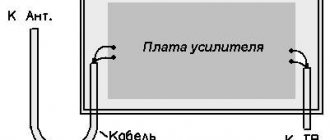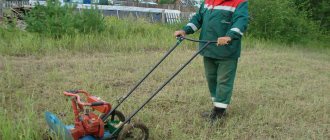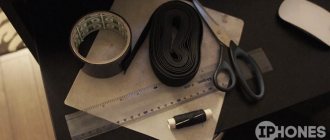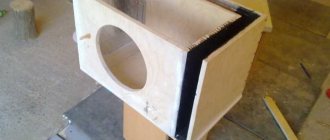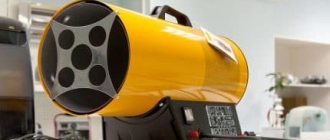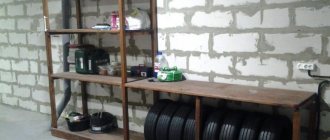Hi all! Recently I encountered a problem with access to the Internet in a country house. I live 15 km from the city, and the usual connection between a smartphone and a modem is very poor. In general, in such remote points there are only two options for connecting to the global network:
- Satellite Internet is very expensive, both in terms of subscription fees and equipment. There is no completely unlimited tariff (at least in my area).
- 3G/4G/5G Internet is the most popular and fairly cheap option. Plus, it is possible to connect to an unlimited tariff.
I chose the second option. And then another question arose - how to strengthen the cellular signal with your own or not with your own hands at the dacha, in a country house or village. Let me remind you that we transmit data using radio waves, which attenuate when passing through an obstacle, as well as from a great distance. Looking ahead a little, I will say that I was able to effectively strengthen cellular communications using a VEGATEL cellular amplifier. For convenience, I have divided the article into steps; if you have any questions while reading, write in the comments.
Reasons for a weak signal
To ensure a high-quality signal, large mobile operators install their own towers that distribute communications within a specific area. However, the main problem is that the signal simply cannot pass through certain barriers.
The walls of high-rise buildings, forested areas and low terrain become huge problems that prevent you from enjoying high-quality cellular communications.
Places where telephone service problems are regularly observed:
- Areas located at a sufficient distance from the station.
- All kinds of sites deep into the ground: parking lots and basements.
- Buildings constructed from metal structures with large thickness of floors.
- The extreme floors of high-rise buildings.
Don't forget that the problem of a weak signal can be hidden not only in location. A mobile phone is a rather fragile gadget, which, moreover, could have been assembled incorrectly from the beginning.
There are often situations in which people who are in the same place but use different phones experience different signals. In such cases, you should be concerned about how to assemble a cellular signal amplifier with your own hands.
What else can affect the quality of the signal received by the phone:
- Metal body, as well as a thick cover for the device.
- Initial defects and manufacturing defects in the antenna area.
- Incorrectly installed operating system.
- Defects caused by contact with water or after a fall.
Due to a sufficient number of reasons, the answer to the question of why the phone does not receive a signal can be completely different. Next, we will talk about how to strengthen a cellular signal with your own hands.
Communication range
The following factors influence the radio range:
- Location of BS and MS and terrain.
- MS power and sensitivity.
- Power and sensitivity BS.
- Antennas used on MS and BS.
- The will of the Lord God (experienced signalmen joke that this is the main thing).
Typically base stations have a power of 20 - 30 W. Antennas are used either whip or directional. The sensitivity of base stations is -100 dB - 115 dB. The user, of course, cannot change or influence all these parameters. The output power of the phone is 0.3 - 2 W, sensitivity - 90 - 105 dB. The sensitivity of a phone is mainly determined by the technologies used to create low noise input devices. If in areas of reliable reception the difference in sensitivity and power between models is almost unnoticeable, then in an area of uncertain reception it can become critical. Often the handset shows the signal level from the base station as 1 - 2 cubes (on the scale), but cannot establish a connection: there is not enough power. And although the ETSI standard regulates the standard output powers for each class of phone, the actual value may vary slightly. Tubes from SAGEM, Alcatel, and Motorola have good sensitivity. And all old phones pass in terms of power, especially Motorola. All phase 2 phones have approximately the same power.
As for the terrain, waves travel better on flat terrain and along the river. The higher you are (within reason), the better the signal. The forest sometimes dampens the waves more than urban buildings.
The phone was severely damaged
It often happens that high-quality signal reception by the phone stops after some emergency situation associated with damage to the case or internals of the device.
If your device “swallowed” water or fell from a fairly high surface, and then stopped receiving a signal, you can draw disappointing conclusions. In this case, it is better to immediately contact a service center, whose specialists will be able to make the “correct diagnosis” and begin immediate “treatment.”
Problems with the operating system
Problems in the operation of any phone functions are often caused by incorrect firmware of the device. In addition, some firmware simply becomes outdated, as a result of which the phone ceases to efficiently perform its main tasks.
Changing the firmware is not a difficult task; there are many detailed instructions on the Internet to help solve such a problem. Before you start, be sure to save all your contacts and make backup copies of all data in your phone's memory.
Note!
Do-it-yourself charger for a car battery: a step-by-step guide for making the device at home, selecting materials for assembling the structureDIY laboratory power supply | Step-by-step instructions on how and from what elements to build a power supply
DIY antenna for digital TV - photo instructions on how to make simple antennas for digital TV
Often, changing the firmware has a positive effect on the quality of the signal received by the device. If replacing the operating system did not help and the phone continues to have poor reception of signals outside the city, you should assemble a cellular amplifier for your dacha with your own hands.
Passive
How to choose a 3G/4G cellular and Internet signal booster for your dacha
These are devices that improve the cellular transmission signal and do not have an active amplification device, that is, they consist of various types of antennas and a passive repeater. All functions of improving Internet connection are performed only by the antenna.
Antenna defect
One of the most common reasons for a phone not to work properly is a breakdown of the device that receives a third-party signal.
As a rule, it is Chinese, inexpensive phones that suffer from home defects, in the design of which the connection between the antenna and the device’s motherboard is not properly protected. As a result, at the slightest fall or impact, the device begins to receive a much worse signal.
Of course, such a misunderstanding can be resolved at a service center. However, if the owner of the phone understands at least a little about the internal structure of the device, he can easily carry out such an operation on his own, without the involvement of outside specialists. In addition, you can easily assemble a GSM antenna with your own hands.
Repairs are carried out in this order:
- Firstly, craftsmen search the Internet for videos that discuss in detail the design of a specific phone model. It is necessary to establish the exact location of the antenna, and then begin to repair it.
- As a rule, the part that receives third-party signals is attached to the top or bottom of the phone body. If the antenna contacts do not fit tightly to the cable from the motherboard, they are carefully adjusted with tweezers.
Note!
DIY induction heater - instructions on how to make a simple and powerful heater- Do-it-yourself sound amplifier: selection of materials and tools for making at home + step-by-step instructions for creating and assembling yourself
- Do-it-yourself wind generator: step-by-step instructions for making a device at home, choosing materials and type of construction
Next, you should put the device back together and check the connection. If there is no result, you need to move on to the next steps.
A little theory
Before you find out how to make the best Internet signal booster for your dacha, you need to understand a little what 3G and 4G are, and also what can cause a bad signal.
Not so long ago, many summer residents used satellite Internet, but this technology has almost completely outlived its usefulness, but now the vast majority of people use it, which provides very good speed for comfortable work on the network. Today in Russia there are three communication formats - 2G, 3G and 4G. As reported a little earlier, in 2 years, in 2022, the most modern format will appear - 5G.
To understand how the classification of communication formats differs, you need to know the following:
- 2G, also known as EDGE, is the slowest mobile Internet, its speed does not exceed 40 Kb/s, and today it is practically not used anywhere.
- 3G is the first high-speed Internet, thanks to which you can surf pages very comfortably. The speed of this communication format does not exceed 800 Kb/s.
- 4G is currently the fastest mobile Internet in Russia, its speed is 2-5 Mb/s.
- 5G - since the implementation of this format has not yet occurred, it is quite difficult to say exact numbers, but the approximate speed should be about 1 Gb/s.
These statistics are approximate, because theoretically the speed can increase at each point, it all depends on the operator’s throughput.
Problems with the signal sent by the base
As mentioned earlier, communication problems can be caused by more than just device defects. A weak signal from the base can be observed for many different reasons, described at the very beginning of the article.
This problem can be solved by purchasing special equipment or by creating a cellular amplifier for your home with your own hands. By purchasing a GSM antenna and connecting it to your phone in the connector provided by the manufacturer, you can forget about communication problems forever.
This design picks up even weak radio signals without any problems and transmits them to the smartphone itself. In addition to the antenna, you can assemble a cellular repeater with your own hands - this will also solve problems with a weak signal.
If communication problems are observed in a country house or on a summer cottage, the most practical and affordable solution would be an antenna with an SMA connector and gain characteristics of 1-5dBi. The price of such a device ranges from 500 to 1000 rubles, so its purchase will not greatly affect the family budget.
Note!
- Do-it-yourself incubator: a step-by-step master class on how to build it yourself, choosing building materials and type of construction
Do-it-yourself cyclone: methods for assembling the device at home, preparing materials and tools + step-by-step instructions
Do-it-yourself subwoofer: types of devices, functions, methods of assembly and installation at home + step-by-step instructions and diagrams for beginners
The device receives even the weakest signals, and then transmits them to the router, which distributes communications to the device. You can assemble an antenna for your phone yourself without any problems, so you don’t even have to buy it, but make it from scrap materials.
Cable and antenna adapters
In the 900 MHz range, the issue of cable selection becomes paramount. Domestic television coaxial cables can only be used to a limited extent (the attenuation of more than 30 dB per 100 m is too high). Of the available imported samples, RG6 is a suitable double-braided coaxial cable. You will find it in any store. The attenuation is 20 - 24 dB per 100 m (tested experimentally). Industrial automotive whip antennas typically include RG59 cable with an attenuation of 28 dB at 100 m. A wave channel antenna with a gain of 12 dB and 10 m of RG6U cable give a total gain of 9.6 dB, and at 20 m - 7 dB.
Most phones have a connector for an external antenna. In addition, for each type of phone there is a so-called antenna adapter (about $5), it connects to the specified connector and is a short piece of cable, on one side of which there is a specific telephone high-frequency connector, and on the other - a standard RF connector. Typically, the attenuation in the antenna adapter does not exceed 1 dB. When purchasing an antenna adapter, make sure it is functional. When you plug the adapter into the phone, the antenna built into the phone is turned off and the output stage switches to the adapter. In other words, if you simply connect the adapter to the phone, the signal on the phone's dial should drop slightly. Then you connect an external antenna to the adapter and the signal increases. If everything goes this way, then the adapter is working.
Is it possible to assemble a signal amplification system yourself?
Strengthening a cellular signal with your own hands is a rather non-trivial task. Before starting work on assembling your own signal amplification system, you should familiarize yourself with the design of the devices to be created.
To ensure high-quality communication in the most inaccessible places, you will need to assemble and connect a whole set of different components. This approach will help you forget about any communication interruptions forever.
The communication amplifier includes:
- Antenna.
- Repeater-repeater.
- Cable.
- Splitter.
- Connectors.
An antenna is the simplest device for amplifying a signal. Installed on a hill, the antenna receives weak waves and then transmits them through the cable to an amplifier, which increases the quality of communication.
What will be needed for production?
The most popular option for a gadget is a diamond-shaped antenna. It is quite simple to construct it yourself, and the quality of the amplified signal ends up being quite high.
For production you will need:
- pliers;
- knife;
- soldering iron;
- insulating tape;
- coaxial cable;
- copper wire 3 – 3.5 mm;
- metal sheet 140 X 140 cm;
- a piece of plastic pipe about 5 - 10 cm long;
- cambrics.
Repeater device
A repeater, also called a repeater, performs the main task in a cellular booster system. It receives a weakened signal, and then increases its quality characteristics and transmits it to cell phones.
The signal is received using a cable connecting the repeater and the installed antenna. It is quite problematic to assemble a device such as a GSM repeater with your own hands.
Settings
First of all, it is recommended to check all connections, as well as inspect the surge protector. Then you should adjust the gain, it should be at a frequency of about 20 dB. There are two configuration methods - manual or automatic. The first is carried out by adjusting the potentiometer knob and changing the direction of the antenna, the second - directly on the repeater.
Thus, you can easily make an amplification system and repeater with your own hands. To do this, you just need to purchase the necessary components, install the equipment, connect and configure everything. And then the user will receive high-speed Internet!
I hate fishing, because I feel sorry for the wasted time. But, nevertheless, I spent the whole week preparing for fishing. The task was set to catch the mobile Internet and additional risks of the level of the received signal on the screen of a cell phone or smartphone, and it was necessary to catch it in the field without active amplifiers and batteries. This can be done using a passive repeater. It’s probably already happened that in order to look at something on the Internet or make a call on a cell phone, you almost had to climb onto the roof or hang half out of the window, catching the risk on the screen of your cell phone or typing an SMS card to throw phone up, or raise it along with the flag on the flagpole.
| Passive repeater at 900 MHz. |
First, try making a simple passive repeater for a 3G signal or cell phone. Two simple directional antennas made of wires, a coaxial cable connecting them, that's the whole structure. With the help of such a simple mobile device that does not require power, you can provide communication in a basement, in a metal hangar or garage, in a de-energized bomb shelter or in another place where a cellular signal does not reach. The size of the antennas themselves will correspond to the selected communication frequency: for a cell phone frequencies are 900 MHz and 1.8 GHz, for mobile Internet about 2 GHz. For the experiment, I made an antenna at 900 MHz, but in practice it also turned out to be operational from 1.8 to 2 GHz. Subsequent measurements of the homemade antenna showed that the range of its excellent matching almost reached 2.080 GHz, otherwise I would not have received the 3G Internet signal. If anyone has already assembled a “simple antenna for receiving terrestrial digital television” from two wire rings, they can easily cope with the task. Everything is done in the same way.
| The diameter of the mandrel (glass) is 4.3 cm. Frequency is 1.9 - 2.2 GHz. |
Determine the wavelength in meters L m = 300 / 900 MHz = 0.33 m Diameter of the turn (ring) of the wire D = L / 3.14 = 0.33 / 3.14 = 0.106 (m) Distance between the rings S = L / 4 = 0 .33 / 4 = 0.08 (m) Accordingly, with increasing frequency, the frames will decrease in size, and losses in the coaxial cable will increase. Antennas at other frequencies will also be calculated. How it works. One directional antenna, removed from an absorbing reinforced concrete wall or raised above the metal roof of a country house, or simply raised above the ground, is oriented towards the base station. The second antenna, be it a basement or a room in a country house, should be aimed at a mobile phone or smartphone or located next to them.
| Electrical circuit of the repeater. 1 - antenna is directed towards the base station. 2 - coaxial cable. 3 - the second antenna is located next to the mobile phone. |
Since the antenna is directional, it has a gain, in this particular case equal to 5 dB. Some of this gain will be lost in the cable. In the cable RK 75 - 3. 7-35, 6 meters long at a frequency of 900 MHz, I lost, as it turned out later, 3 dB, which, taking into account the error, coincides with the technical characteristics of the feeder used. The efficiency of the antenna in free space is better with increasing height. It induces more field strength and improves direct visibility with the base station, providing stable communication, since houses and trees are no longer an obstacle to radio waves. If it is necessary to use several frequencies, several repeaters with different ring diameters will be required. Here, as when fishing, you need all sorts of bait, so I prepared the gear like an avid fisherman, bending wires like hooks of different diameters. Everything will depend on the conditions. Let's see what we can catch.
| Test site. |
| Orientation of the rings. |
All that's left is to try. Here is the fishing spot, an old gazebo. The rod is made from a miraculously preserved shortened antenna mast, which saved me when I was flying from the roof, and therefore I definitely won’t climb a tree; at my age, bones don’t heal well. The pole was extended with plastic tubes, in which low-current wires are usually laid. Even a wooden bead was used, because the antenna itself weighs little. Turning the fishing rod, I point the rings towards the nearest town, temporarily turning into a fox hunter. Next to the rings of the antenna below, I place my mobile phone.
| Full scale in the antenna. |
| Two risks without a repeater. |
Using a repeater, the mobile phone added three marks on the display, providing 100% communication with the nearest civilization (base station), located 6 kilometers behind the forest. For those who like to chat on a cell phone for a long time outside the city, such a device is simply necessary. As a rule, far from base stations, the phone produces full power, which is harmful to health. The right phone (meaning a small SAR value - a sanitary norm), having a good connection with the base station, will deliver less power to the antenna, which means that the body will be less exposed to the microwave field. But I already talked about this in the article “protect yourself from cell phone radiation.” By evening, more and more people want to check their mobile phones and smartphones. The tablet came to life, slowly loading, showing individual pictures of television programs. The smartphone began to flip through the pages of the GRANDFATHER CLUB…. They moved a few meters away from the repeater, but the Internet pages continued to turn over.
| You can flip through the pages. |
| Everything is working. |
— Or maybe this is a joke, maybe 3G is already working everywhere? Offended, I throw my fishing rod on the ground. You can see from the dissatisfied faces that everything is frozen, lines and symbols have flown off the displays. I hate fishing, so much free time is wasted! True, I have not yet seen a fisherman who would not return to the old place to try another bait. Only the diameter of the mug was tested (900 MHz), the diameter of the glasses is still ahead (2-2.2 GHz). Well, the bait on the spiral antenna will complete the catch , I foresee in advance that the construction will be heavy, but for a hospital it’s what we need. Yes, by the way about polarization. In a hurry, or maybe out of absent-mindedness, I completely forgot about it and already when I was looking at the photographs I remembered. Base mobile cellular stations have antennas with vertical polarization, and therefore the tackle on the fishing rod had to be rotated 90 degrees, so that the section of the rings was not at the bottom, but at the side, which corresponded to a similar polarization. However, it was possible to catch the radio signal even with horizontal polarization of the rings on the mast, despite the minimal loss of 6 dB due to mismatches, the experiment was a success. On the other hand, the forest has its own laws and the passage of a signal with horizontal polarization is better in it. P.
S.
Two years have passed. This summer, in 2016, I was preparing for the arrival of my grandchildren on vacation from their parents or vice versa, and I decided to install digital television in the gazebo, watch cartoons, and just to catch my breath. So that the antenna would not be conspicuous, I wove it from wires and called it an invisible antenna. The result was four rings, which performed better when receiving digital television than the two-ring design. I wrote in detail about this design in the article “Invisible antenna - phased eight for terrestrial digital television.”
| Four laps are better than two. All circles are the same size. All dimensions are the same as in the previous experiment. Only the length of the connecting coaxial cable (RK75) this time was only 3 meters. |
I wove similar two antennas for a passive mobile communications repeater on the 900 MHz band, just in case someone needs the Internet. Today there is no Internet in our lowland yet. The "H" icon appears, but it takes years to load. The double eight, laid flat, was raised to the level of the roof of the gazebo, and it became invisible in the crown of the wild apple tree. Thanks to this design, the mobile phone added two risks to the two levels. This seemed to be the end of the experiment, but there was still a moment of triumph when young parents urgently needed the Internet. The repeater did not fail, caught the Megafon operator, and quickly downloaded the necessary information. At that moment I felt like a magician who, with the help of a wire frame, opens a new spring.
Continuation.
Homemade GSM 900 patch antenna for a passive repeater
Homemade antenna for the range 1.8 - 2.4 GHz.
Test site. Vladimir region, 3 km from the Moscow region. Floodplain of the Dubyonka River.
DIY cellular amplifier assembly
You should immediately make a reservation - it is better to purchase a repeater in a store. This is a rather complex device that only people with sufficient knowledge in the field of electrical engineering and radio wave physics can assemble on their own.
Then you purchase a coaxial cable, a power supply and an outdoor antenna. You should also buy an internal antenna for high-quality signal transmission indoors.
Let's move on to assembly and installation. An external device with a mast of one and a half to two meters is installed on the roof of the room, and the antenna is rotated in the direction in which the telecom operator's tower is presumably located.
Using a coaxial cable, the antenna is connected to a repeater installed indoors. Then the system is connected to the power supply and the device is checked.
Let us repeat, it is problematic to assemble a 4G repeater with your own hands - it is better to worry about buying the device in a store, and then assemble and install the resulting structure yourself.
How to test changes
You can just “surf” the Internet a little to determine whether the speed has improved or not. If you need accurate data, measure your speed using any service, for example, SpeedTest or Yandex.Internetometer. This must be done before and after installing the antenna on the modem.
We go to the website and start the procedure. Evaluate the result when the process is completed. Repeat it several times and calculate the average value - the indicator will be the real speed.
Click on "Measure" on the website
If you need a simple antenna that does not require special skills or knowledge to make, make a wire or can antenna. You can also take the option with a colander or an old satellite dish. For more experienced people, more complex methods are suitable - the Kharchenko antenna or the “Double Ring”.
